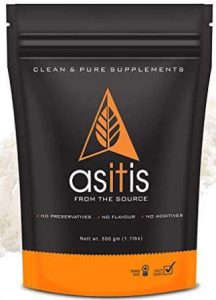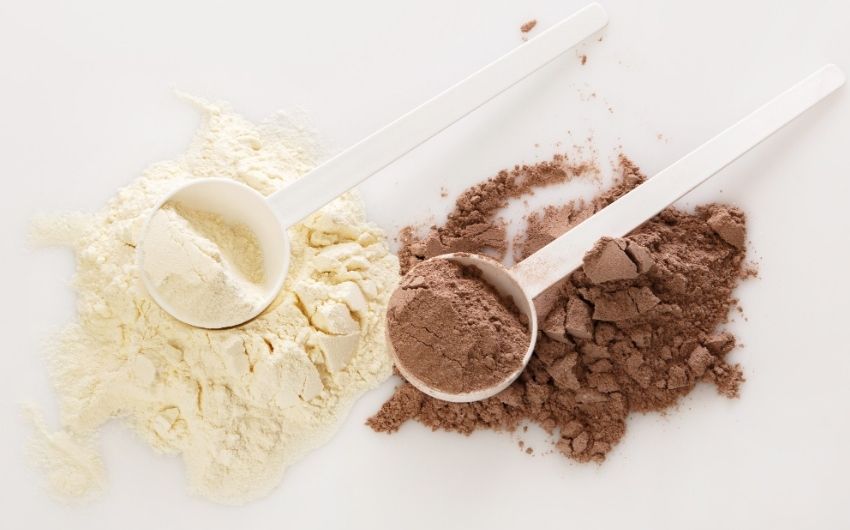What is the first thing that comes to mind when thinking about weight loss? An assessment of protein load. It seems so, doesn’t it? All of us try to increase our intake of protein in our diet while trying to lose weight.
As long as we can’t get enough protein from our diet, we’ll incorporate protein powders like whey and casein into our daily routine. Which powder is better? Are they the same or are they different? Here’s what you need to know:
Casein and Whey Proteins: Differences

Protein powders made from whey and casein are the most popular. 20% of milk protein comprises whey protein, while 80% of milk protein is casein. Proteins of this kind are high quality because they hold the essential amino acids that your body cannot produce. You must get these amino acids from food. The best thing about both is that your body can easily digest and absorb them both.
Where do casein and whey proteins come from?
Cheese production results in both whey and casein as by-products. When cheese is being made, certain enzymes are added to the heated milk, which coagulates or precipitates the casein, leaving behind the liquid.
Whey protein is a liquid that is dried and turned into powder form later. It is also possible to dry casein curds to make powder; they can be added to other dairy products.
Muscle building: What is better?
It’s better to consume whey protein if you want to build muscles. Besides being easily absorbed, it contains more amino acids than casein.
The amino acids found in whey protein are branched-chain amino acids (BCAAs), while casein is richer in histidine, methionine, and phenylalanine.
Even though whey protein contains all the amino acids needed for muscle building, leucine is what kick starts the process and thus plays a greater role in it.
Whey protein benefits

Active proteins called immunoglobulins are found in whey protein, which can help strengthen your immune system. Antibiotic properties make these immunoglobulins a powerful tool in slowing down or even killing the growth of aggressive bacteria and viruses.
Test-tube studies and animal studies have shown that whey protein has antioxidant properties that are capable of inhibiting the growth of cancerous cells and tumours. In addition to delivering nutrients to your body, these immunoglobulins also help you absorb other nutrients, such as iron.
Benefits of casein protein

There are certain biologically active peptides in casein that are beneficial to digestion and the immune system. The bioactive peptides in these foods can also help lower your blood pressure and heart rate. Additionally, these peptides contain minerals such as phosphorus and calcium, making digestion easier.
Consumption: What to do?
As you will see from the guidelines, making a protein shake is very simple. Knowing how to make a good protein shake is essential. The following are the steps you need to take:
A Blender
The first step in making a protein shake is to use a blender. Unless you have a blender, you cannot make a shake. A very popular saying says, “You can shake up anything with a good blender.” For this reason, it is advisable to purchase a good blender.
A Liquid Base
A liquid base will be needed as well. The liquid base you choose for this protein shake should have a high protein content. Liquid bases like milk or dairy alternatives with plant proteins, among others, can be used.
A Protein Source
After you have your base, you need to add your protein. There is no point in calling them protein shakes just because we call them that. Hemp seeds, protein powder, full-fat yoghurt, and so on, can be added.
Fruits, Vegetables, And Nutritious Carbohydrates
You should then add healthy carbohydrates, fruits, and vegetables to the diet. The body will receive all the other macronutrients it needs and it will maximize your nutrient intake. You can add foods such as oats, cucumbers, celery, mangos, dates, bananas, and berries.
Calorie-Rich Foods
Adding calorie-rich foods such as avocados, yoghurt, healthy oils, nuts, kinds of butter, to these shakes will help you gain weight.
You can make protein shakes in that manner. You should avoid including foods you are allergic to in your diet. Adding a substitute for any food you are allergic to your protein shake is always an option.
Mostly, protein powder has little effect on body weight gain. This can be greatly improved by adding carbohydrates and fats. Protein intake is more than needed for most people who aren’t vegans.
Casein or whey protein can be mixed with milk or water. The milkshake will be stronger if you mix it with milk, especially if you use casein. If you use a blender instead of a spoon to mix the powder, it will mix better with the liquid.
You should add the powder after the liquid. Using this method, the protein powder won’t stick to the bottom of the container.
Which is better?
There is a difference in the digestion time of casein and whey protein. Due to the slower digestion of casein compared with whey, casein is appropriate for bedtime, and whey is appropriate for exercising. Biologically active compounds can be found in both protein powders and can strengthen your immune system. Mixes containing both are even available.
The one you choose will not magically improve your results at the gym or your overall health. Ultimately, what matters most is how much protein you consume.
DISCLAIMER
The best way to get protein is to consume it as part of your regular diet rather than relying on supplements.
When to Take Which Protein
The fast-digesting properties of whey protein make it an excellent pre-and post-exercise supplement, allowing your muscles to get energy quickly while minimizing digestive discomfort (unless your digestion is compromised by milk, in this case, you shouldn’t use milk protein supplements).
Casein, on the other hand, is better used when fasting, such as before bedtime or before performing daily activities since casein releases slowly amino acids, making you feel sated. We can also add it to meals.
To get amino acids into the system as quickly as possible, digestion should be speeded up before and after training, while we can achieve fat loss by suppressing hunger and catabolism.
Study of Casein and Whey
A study looked at healthy individuals who consumed normal amounts of protein. Following a 10-hour fast, either 30 grams of whey protein or 30 grams of casein protein were administered to the subjects.
Immediately after consuming whey or casein, blood leucine levels peaked. After four hours, however, levels of the whey protein group dropped to baseline. A lower peak was observed for the casein protein group, but it didn’t return to baseline until seven hours later.
By supplementing whey protein, 68 percent of protein was synthesized, but no degradation occurred. Casein decreased the degradation of proteins by 34% while not affecting the synthesis of proteins.
Earlier, we mentioned that both proteins have benefits. Considering the digestion rate of a mixed protein meal (instead of supplementing with a single protein) changes the effects on protein synthesis and breakdown.
As a result of the study above, it is possible to question the conventional advice of eating every three hours to avoid muscle loss. You can stay satiated between meals for much longer when you take a protein supplement, especially casein.
A different study found that taking either kind of milk protein following exercise affected muscle protein net balance similarly (no significant differences were found), resulting in net muscle protein synthesis when blood amino acid levels varied.
It’s therefore important to get enough protein, whether it comes from whey protein, casein, plant-based protein powder, or any other source of protein, at all times. However, it’s best to take whey protein around workouts and casein during fasting periods.
As far as protein breakdown is concerned, casein is an anti-catabolic, slow-digesting protein: It prevents excessive protein breakdown. Besides stimulating protein synthesis, whey protein does not inhibit catabolism. Your diet should include both whey and casein for anabolism and catabolism suppression.


